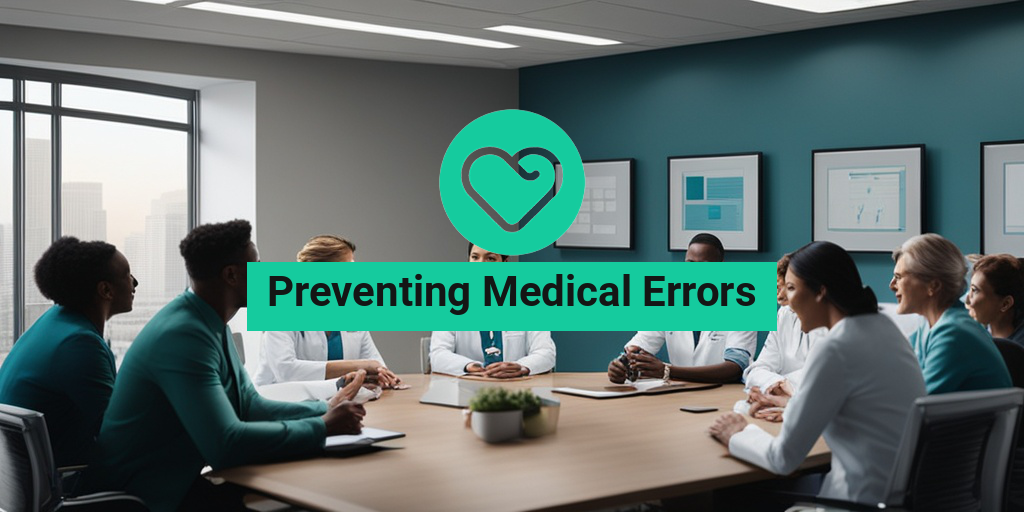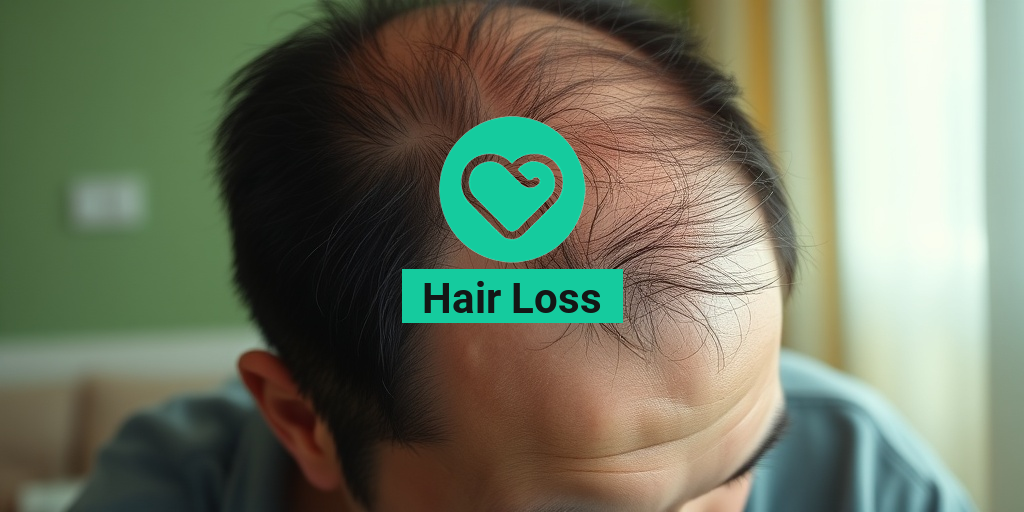“`html
Understanding Medical Errors
Medical errors are a significant concern in healthcare, affecting patient safety and outcomes. These errors can occur at any stage of the healthcare process, from diagnosis to treatment, and can lead to serious consequences for patients. Understanding the nature of these errors is crucial for preventing medical errors and ensuring a safer healthcare environment.
What Are Medical Errors?
Medical errors are defined as preventable adverse effects of care, whether they are due to actions or inactions by healthcare providers. These errors can arise from various factors, including miscommunication, inadequate training, and system failures. The World Health Organization (WHO) estimates that millions of patients are harmed each year due to medical errors, highlighting the urgent need for effective prevention strategies.
The Importance of Preventing Medical Errors
Preventing medical errors is essential not only for patient safety but also for maintaining trust in the healthcare system. When patients feel safe and secure in their treatment, they are more likely to engage in their healthcare actively. Additionally, reducing medical errors can lead to lower healthcare costs, as errors often result in extended hospital stays and additional treatments.
Common Types of Medical Errors
Understanding the common types of medical errors can help healthcare professionals and patients identify potential risks and implement strategies for preventing medical errors. Here are some of the most prevalent types:
1. Medication Errors
Medication errors are among the most common types of medical errors. They can occur during prescribing, dispensing, or administering medications. Common causes include:
- Miscommunication: Poor communication between healthcare providers can lead to incorrect dosages or medications being prescribed.
- Look-alike/Sound-alike Medications: Medications with similar names can be easily confused, leading to administration errors.
- Inadequate Patient Information: Failing to consider a patient’s allergies or existing medications can result in harmful interactions.
2. Diagnostic Errors
Diagnostic errors occur when a healthcare provider fails to identify a condition accurately or timely. This can lead to inappropriate treatment and worsening of the patient’s condition. Factors contributing to diagnostic errors include:
- Insufficient Information: Lack of comprehensive patient history or inadequate testing can hinder accurate diagnosis.
- Confirmation Bias: Providers may focus on information that confirms their initial diagnosis, overlooking contradictory evidence.
3. Surgical Errors
Surgical errors can occur during procedures and may include wrong-site surgery, leaving surgical instruments inside a patient, or anesthesia errors. These errors can have devastating consequences and often stem from:
- Poor Communication: Inadequate communication among surgical teams can lead to critical mistakes.
- Lack of Protocols: Failure to follow established safety protocols can increase the risk of surgical errors.
4. Patient Falls
Patient falls are a common occurrence in healthcare settings, particularly among elderly patients. These falls can lead to serious injuries, including fractures and head trauma. Contributing factors include:
- Inadequate Supervision: Patients may not receive the necessary assistance when moving or using the restroom.
- Environmental Hazards: Cluttered hallways or wet floors can increase the risk of falls.
5. Infections Acquired in Healthcare Settings
Healthcare-associated infections (HAIs) are infections that patients acquire while receiving treatment for other conditions. These infections can be prevented through proper hygiene practices and protocols. Common types of HAIs include:
- Catheter-Associated Urinary Tract Infections (CAUTIs)
- Central Line-Associated Bloodstream Infections (CLABSIs)
- Surgical Site Infections (SSIs)
By understanding these common types of medical errors, healthcare providers can take proactive steps to mitigate risks and enhance patient safety. Resources like Yesil Health AI (yesilhealth.com) can provide valuable evidence-based information to support healthcare professionals in their efforts to prevent medical errors.
In conclusion, preventing medical errors is a shared responsibility among healthcare providers, patients, and the healthcare system as a whole. By fostering a culture of safety and open communication, we can work together to reduce the incidence of medical errors and improve patient outcomes. 🌟
“`

“`html
Causes of Medical Errors
Medical errors are a significant concern in healthcare, affecting patient safety and outcomes. Understanding the causes of medical errors is crucial for preventing medical errors and ensuring high-quality care. Here are some of the primary factors that contribute to these errors:
1. Communication Failures
One of the leading causes of medical errors is poor communication among healthcare providers. Misunderstandings can arise during handoffs between shifts, leading to incomplete information being passed on. For instance, if a nurse fails to communicate a patient’s allergy to a medication, it could result in a serious adverse reaction.
2. Inadequate Training and Education
Healthcare professionals must undergo rigorous training, but gaps in education can still occur. For example, if a nurse is not adequately trained on a new medication or medical device, they may misuse it, leading to errors. Continuous education, such as preventing medical errors CME (Continuing Medical Education), is essential to keep healthcare providers updated on best practices.
3. Systemic Issues
Healthcare systems can also contribute to errors. Overworked staff, understaffing, and high patient-to-nurse ratios can lead to burnout and mistakes. When healthcare professionals are stretched too thin, they may overlook critical details, increasing the risk of errors.
4. Lack of Standardization
Inconsistent protocols and procedures can create confusion. For instance, if different departments within a hospital use varying methods for medication administration, it can lead to errors. Standardizing practices across the board can help mitigate this risk.
5. Technology Failures
While technology can enhance patient care, it can also introduce new risks. Electronic health records (EHRs) can sometimes contain errors or be poorly designed, leading to incorrect information being displayed. Additionally, reliance on technology can lead to complacency, where healthcare providers may not double-check their work.
Impact of Medical Errors
The impact of medical errors extends beyond individual patients; it affects families, healthcare providers, and the healthcare system as a whole. Understanding these impacts is vital for preventing medical errors and improving patient safety.
1. Patient Harm
The most immediate impact of medical errors is harm to patients. This can range from minor complications to severe injuries or even death. According to studies, medical errors are a leading cause of death in the United States, highlighting the urgent need for effective prevention strategies.
2. Emotional and Psychological Effects
Medical errors can lead to significant emotional distress for patients and their families. Feelings of betrayal, anger, and anxiety can arise when a loved one suffers due to a preventable error. Healthcare providers may also experience guilt and stress, which can affect their performance and well-being.
3. Financial Consequences
Medical errors can result in substantial financial burdens. Patients may face additional medical costs for corrective treatments, and healthcare facilities may incur expenses related to lawsuits and increased insurance premiums. This financial strain can divert resources away from patient care, further impacting the quality of healthcare services.
4. Erosion of Trust
Trust is a cornerstone of the patient-provider relationship. When medical errors occur, it can erode this trust, leading patients to question the competence of their healthcare providers. This skepticism can deter individuals from seeking necessary medical care, ultimately affecting their health outcomes.
5. Regulatory and Legal Repercussions
Healthcare facilities may face regulatory scrutiny and legal action following medical errors. This can lead to increased oversight, fines, and even the loss of licenses for healthcare professionals involved. Such repercussions can create a culture of fear rather than one focused on learning and improvement.
In conclusion, understanding the causes of medical errors and their impact is essential for developing effective strategies to prevent them. By addressing communication failures, enhancing training, and standardizing practices, healthcare providers can significantly reduce the occurrence of these errors and improve patient safety.
“`

“`html
Preventive Strategies for Patients
Preventing medical errors is a shared responsibility between healthcare providers and patients. As a patient, you can take proactive steps to minimize the risk of errors during your medical care. Here are some effective strategies:
1. Be Informed
Knowledge is power! Understanding your health condition, treatment options, and medications can significantly reduce the likelihood of errors. Here are some tips:
- Research your condition: Use reputable sources to learn about your diagnosis.
- Ask questions: Don’t hesitate to ask your healthcare provider for clarification on anything you don’t understand.
- Know your medications: Familiarize yourself with the names, dosages, and purposes of your medications.
2. Maintain an Accurate Medication List
Keeping an updated list of all medications you are taking, including over-the-counter drugs and supplements, is crucial. This list should include:
- Medication names
- Dosages
- Frequency of use
- Prescribing doctor’s name
Share this list with every healthcare provider you visit to ensure they have the most accurate information.
3. Communicate Effectively
Effective communication with your healthcare team can prevent misunderstandings that lead to errors. Here are some communication tips:
- Be honest: Share your complete medical history, including allergies and past reactions to medications.
- Speak up: If something doesn’t feel right or if you notice discrepancies in your care, voice your concerns immediately.
- Involve family members: Having a trusted family member or friend accompany you to appointments can help ensure that important information is not overlooked.
4. Understand Your Treatment Plan
Before starting any treatment, make sure you fully understand the plan. Ask your healthcare provider to explain:
- The purpose of the treatment
- Potential side effects
- Expected outcomes
Being informed about your treatment can help you recognize any issues early on.
5. Utilize Technology
In today’s digital age, technology can be a valuable ally in preventing medical errors. Consider using:
- Health apps: Many apps can help you track medications, appointments, and symptoms.
- Patient portals: Access your medical records and communicate with your healthcare team online.
These tools can enhance your engagement in your healthcare journey and help prevent errors.
Role of Healthcare Providers
Healthcare providers play a critical role in preventing medical errors. Their expertise and diligence are essential in ensuring patient safety. Here are some key responsibilities of healthcare providers:
1. Accurate Documentation
One of the most important aspects of preventing medical errors is maintaining accurate and up-to-date patient records. This includes:
- Documenting patient history: A thorough understanding of a patient’s medical history can prevent misdiagnosis and inappropriate treatments.
- Recording medication details: Ensuring that all medications are accurately recorded helps avoid dangerous drug interactions.
2. Effective Communication
Healthcare providers must communicate clearly with each other and with patients. This includes:
- Interdisciplinary collaboration: Team members should share information about patient care to ensure everyone is on the same page.
- Patient education: Providers should take the time to explain treatment plans and answer any questions patients may have.
3. Continuous Training and Education
Staying updated on the latest medical guidelines and technologies is crucial for healthcare providers. Regular training can help them:
- Recognize potential errors: Being aware of common pitfalls can help providers avoid them.
- Implement best practices: Continuous education ensures that providers are using the most effective and safe methods in patient care.
4. Implementing Safety Protocols
Healthcare facilities should have established protocols to minimize the risk of errors. This includes:
- Standardized procedures: Following established guidelines for medication administration and patient care can reduce variability and errors.
- Regular audits: Conducting audits of patient care processes can help identify areas for improvement.
5. Encouraging a Culture of Safety
Creating an environment where staff feel comfortable reporting errors or near misses is vital. This can be achieved by:
- Promoting open communication: Encourage staff to speak up about concerns without fear of retribution.
- Recognizing and rewarding safety initiatives: Acknowledging efforts to improve safety can motivate staff to prioritize patient safety.
By working together, patients and healthcare providers can significantly reduce the risk of medical errors, ensuring safer and more effective healthcare experiences. 🌟
“`

“`html
Technology in Error Prevention
In today’s fast-paced healthcare environment, preventing medical errors has become a top priority. One of the most effective ways to achieve this is through the integration of technology. From electronic health records (EHR) to advanced decision support systems, technology plays a crucial role in enhancing patient safety and reducing the likelihood of errors.
Electronic Health Records (EHR)
Electronic Health Records are digital versions of patients’ paper charts. They provide real-time, patient-centered records that make information available instantly and securely to authorized users. Here’s how EHRs contribute to preventing medical errors:
- Improved Accuracy: EHRs reduce the risk of transcription errors that can occur with handwritten notes.
- Comprehensive Patient Information: They consolidate patient data, including medications, allergies, and previous treatments, which helps healthcare providers make informed decisions.
- Alerts and Reminders: EHR systems can alert providers about potential drug interactions or allergies, significantly reducing the risk of adverse events.
Decision Support Systems
Decision support systems (DSS) are tools that help healthcare providers make clinical decisions. These systems analyze data and provide recommendations based on best practices and clinical guidelines. Here’s how they aid in preventing medical errors:
- Clinical Guidelines: DSS can provide evidence-based guidelines tailored to individual patient needs, ensuring that providers follow the best practices.
- Risk Assessment: These systems can assess patient risk factors and suggest preventive measures, helping to avoid complications.
- Data Analytics: By analyzing large datasets, DSS can identify trends and patterns that may indicate potential errors, allowing for proactive measures.
Telemedicine and Remote Monitoring
Telemedicine has gained popularity, especially in recent years. It allows healthcare providers to consult with patients remotely, which can help in preventing medical errors in several ways:
- Increased Access: Patients can receive timely care without the need for in-person visits, reducing the chances of missed appointments and follow-ups.
- Continuous Monitoring: Remote monitoring devices can track patients’ vital signs and alert healthcare providers to any concerning changes, facilitating early intervention.
- Enhanced Communication: Telemedicine platforms often include secure messaging features, allowing for better communication between patients and providers.
Reporting and Learning from Errors
Despite the best efforts to prevent them, medical errors can still occur. However, the key to improving patient safety lies in how these errors are reported and learned from. A culture of transparency and continuous improvement is essential in healthcare settings.
The Importance of Reporting Errors
Reporting medical errors is crucial for several reasons:
- Identifying Patterns: By analyzing reported errors, healthcare organizations can identify common trends and areas for improvement.
- Enhancing Training: Understanding the types of errors that occur can inform training programs for healthcare staff, ensuring they are better equipped to prevent similar mistakes in the future.
- Building Trust: A transparent reporting system fosters trust among patients and providers, as it shows a commitment to safety and quality care.
Creating a Learning Culture
To effectively learn from errors, healthcare organizations must cultivate a culture that encourages reporting and discussion. Here are some strategies to promote a learning culture:
- Non-Punitive Reporting Systems: Implementing systems where staff can report errors without fear of punishment encourages more open communication.
- Regular Training and Workshops: Continuous education on error prevention and safety protocols keeps staff informed and engaged.
- Feedback Mechanisms: Providing feedback on reported errors and the actions taken to address them reinforces the importance of reporting and learning.
In conclusion, preventing medical errors requires a multifaceted approach that leverages technology and fosters a culture of reporting and learning. By embracing these strategies, healthcare organizations can significantly enhance patient safety and improve overall care quality. 🌟
“`

“`html
Frequently Asked Questions about Preventing Medical Errors
What are the most common types of medical errors?
Medical errors can occur in various forms, including:
- Medication errors: Incorrect dosages or wrong medications.
- Diagnostic errors: Misdiagnosis or delayed diagnosis.
- Procedural errors: Mistakes made during surgical or other procedures.
- Communication errors: Misunderstandings between healthcare providers or between providers and patients.
How can healthcare professionals help in preventing medical errors?
Healthcare professionals can take several steps to minimize the risk of medical errors, such as:
- Implementing checklists for procedures.
- Ensuring clear communication among team members.
- Regularly updating their knowledge through continuing education courses.
- Encouraging a culture of reporting errors without fear of punishment.
What role does patient involvement play in preventing medical errors?
Patients can play a crucial role in preventing medical errors by:
- Being proactive in asking questions about their treatment.
- Keeping an accurate list of their medications and allergies.
- Understanding their diagnosis and treatment plan.
- Communicating openly with their healthcare providers.
Are there specific training programs for preventing medical errors?
Yes, there are various training programs and courses available, including:
- Continuing Medical Education (CME) courses focused on preventing medical errors.
- CEU programs for nursing professionals.
- Workshops and seminars that address best practices in patient safety.
What are the legal requirements for preventing medical errors in Florida?
In Florida, healthcare providers are required to adhere to specific regulations aimed at preventing medical errors, which include:
- Mandatory reporting of medical errors.
- Participation in training programs on error prevention.
- Implementation of safety protocols in healthcare settings.
How can technology assist in preventing medical errors?
Technology plays a significant role in enhancing patient safety by:
- Utilizing electronic health records (EHR) to reduce errors in medication administration.
- Implementing clinical decision support systems to aid in diagnosis and treatment.
- Employing telemedicine to improve access to care and reduce miscommunication.
What should I do if I suspect a medical error has occurred?
If you believe a medical error has occurred, consider taking the following steps:
- Contact your healthcare provider immediately to discuss your concerns.
- Request a review of your medical records.
- Consider filing a formal complaint with the healthcare facility.
- Seek legal advice if necessary.
Where can I find more resources on preventing medical errors?
For more information on preventing medical errors, you can explore:
- The Agency for Healthcare Research and Quality (AHRQ) website.
- Local healthcare organizations that offer training and resources.
- Online platforms that provide CME and CEU courses.
By understanding and addressing the factors that contribute to medical errors, both healthcare providers and patients can work together to enhance safety and improve outcomes. 🌟
“`




